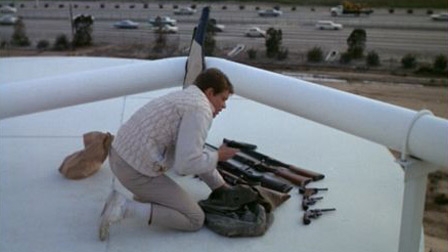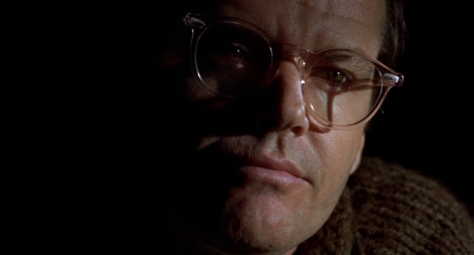By Dennis Hartley
(Originally posted on Digby’s Hullabaloo on November 10, 2007)

There is a key scene in Ridley Scott’s crime epic American Gangster that defines the personal code that drives its main protagonist. “Look at the way you’re dressed,” impeccably groomed, tastefully attired 1970s Harlem drug kingpin Frank Lucas (Denzel Washington) says in disgust, to his ostentatiously clothed brother Huey (Chiwetel Ejiofor), “…it’s a look that says: ‘arrest me’. Remember, the loudest one in the room is also the weakest one in the room.”
It’s one of the axioms Lucas picked up working as a driver for his mentor, an old-school Harlem crime lord (Clarence Williams III). By the time his boss keels over from a heart attack, Lucas has been thoroughly schooled in the shrewd business acumen of how to be a wolf in sheep’s clothing. No matter how venal your methods are for clawing your way to the top, if you can swing it while maintaining a respectable public appearance, everybody will still love you.
Scott’s film is all about “appearances”; judging a book by its cover, if you will. When New Jersey police detective Richie Roberts (Russell Crowe) first appears onscreen, it’s unclear whether we’re observing a cop and his partner serving a warrant…or watching a disheveled street thug and his pal pulling a B & E.
While his personal grooming habits may be questionable, it is apparent his integrity is of the highest order. Not only is he an honest cop in a department soaked with corruption (he’s sneered at as a “boy scout” when he turns in a million in cash discovered in a dealer’s car), he is also diligently studying to pass the bar exam so he can prosecute criminals in court as well. Ironically, he is concurrently entangled in a messy child custody battle with his ex-wife.
Lucas, on the other hand, maintains the appearance of an upstanding citizen; while surreptitiously operating on the opposite side of the law. He has prospered via an ingenious Southeast Asian heroin pipeline that bypasses pesky “middlemen”. He buys an estate in the suburbs and sets up house for his brothers and his mother (played by the great Ruby Dee). He marries a beautiful Latina (Lymari Nadal) and ingratiates himself as a pillar of the community, mingling with the hoi polloi and contributing to charitable causes.
Most interestingly, Lucas is largely enabled to “hide in plain sight” due to a culture of institutional racism running through law enforcement during this era (the early to mid 1970s). it was beyond the ken of the law enforcement community to even consider that such a sophisticated, large-scale drug operation could be helmed by an African-American.
Steven Zailian’s screenplay is based on true events; it is set in the same NYC milieu asThe French Connection, Serpico and Prince of the City; namely, the occasionally blurry line between a “cop” and a “robber”. Scott also uses a trick that worked well for Michael Mann in Heat, building dramatic tension by keeping his two stars apart for most of the film, while teasing us with the inevitability that the pair’s “professional” paths are destined to cross. When Washington and Crowe finally do share a scene, it proves worth the wait (keep an eye on the coffee cup that serves as a metaphorical chess piece during the exchange; it’s a masterclass in “object work” by both actors).
Scott utilizes his patented slick visual style (although a grittier look might have better served the story). One bone to pick: despite the deliberate pacing for the first 2 hours, something about the denouement feels curiously rushed. That aside, honorable mentions need to go out to Josh Brolin, for his full-blooded performance as a corrupt Special Investigations Unit cop, and Armand Assante as a mob big shot. I liked the period soundtrack as well, although we need to declare a moratorium on Bobby Womack’s “Across 110th Street”. It’s a great song, but it’s now been used in three films!























